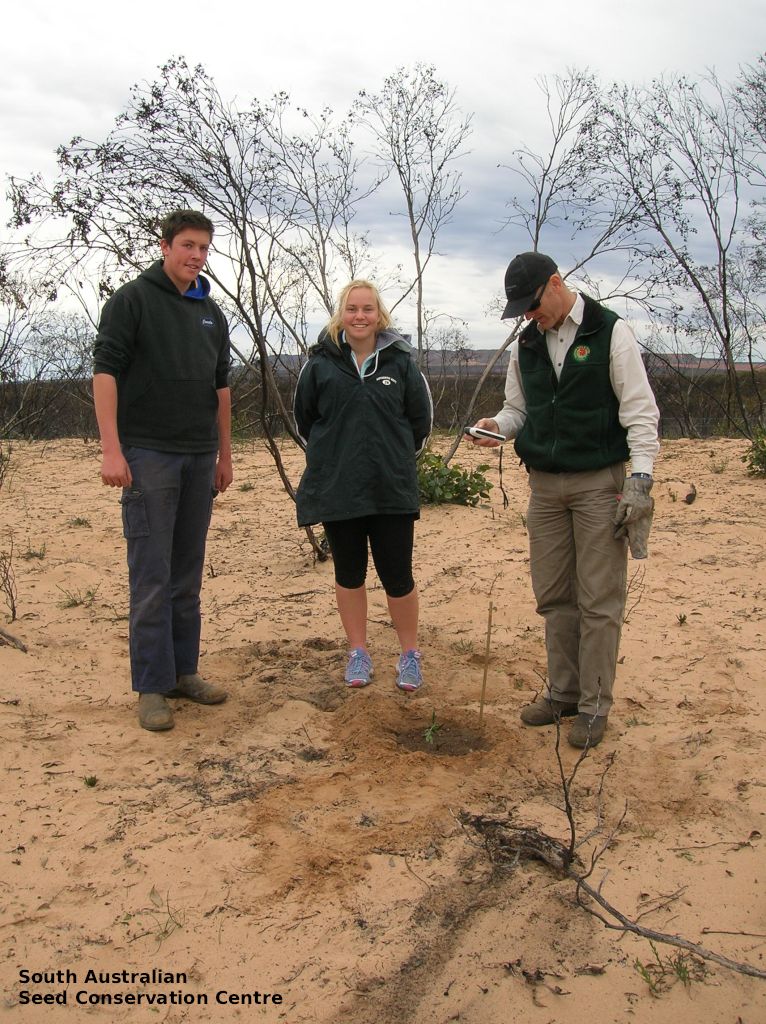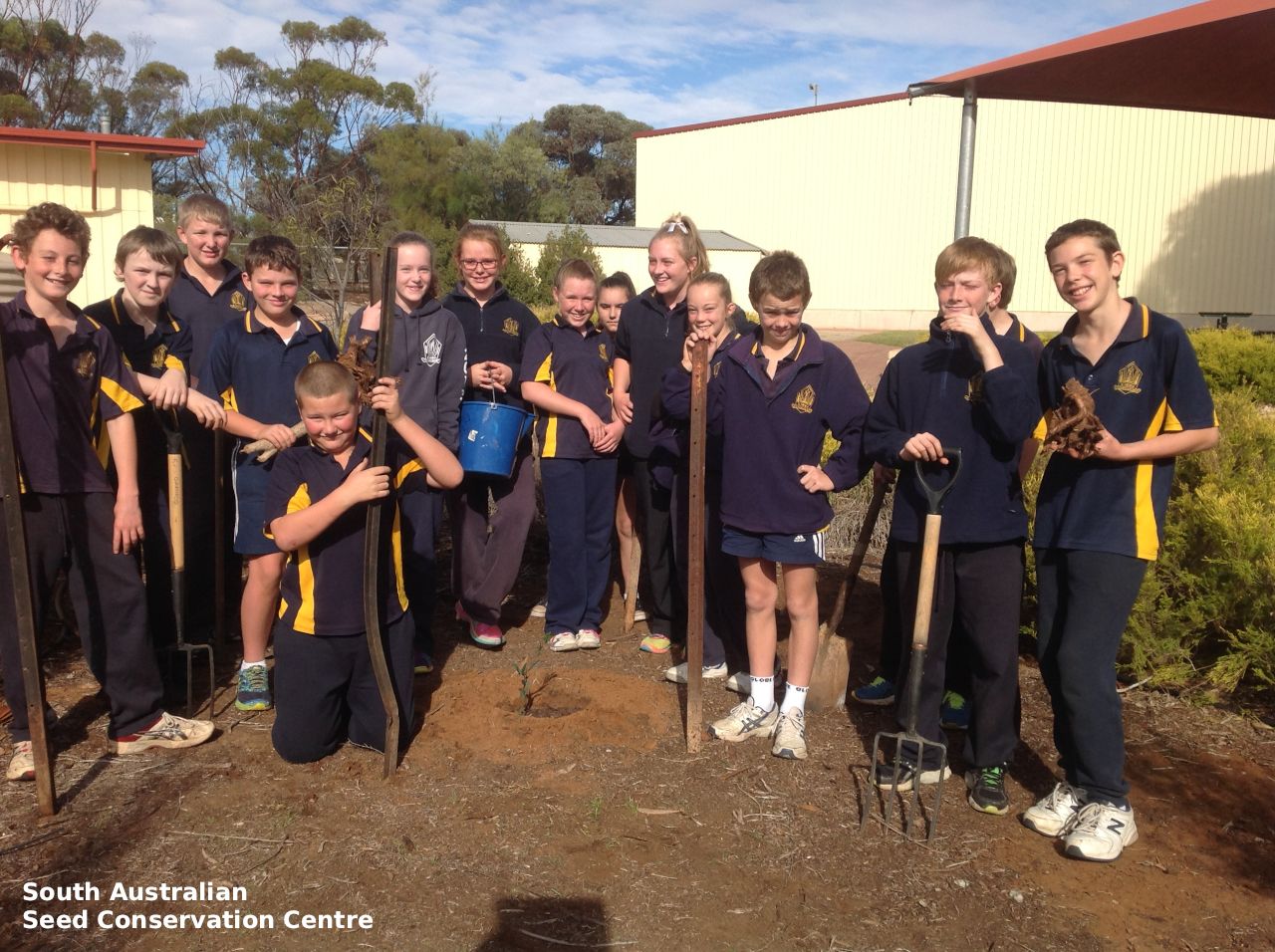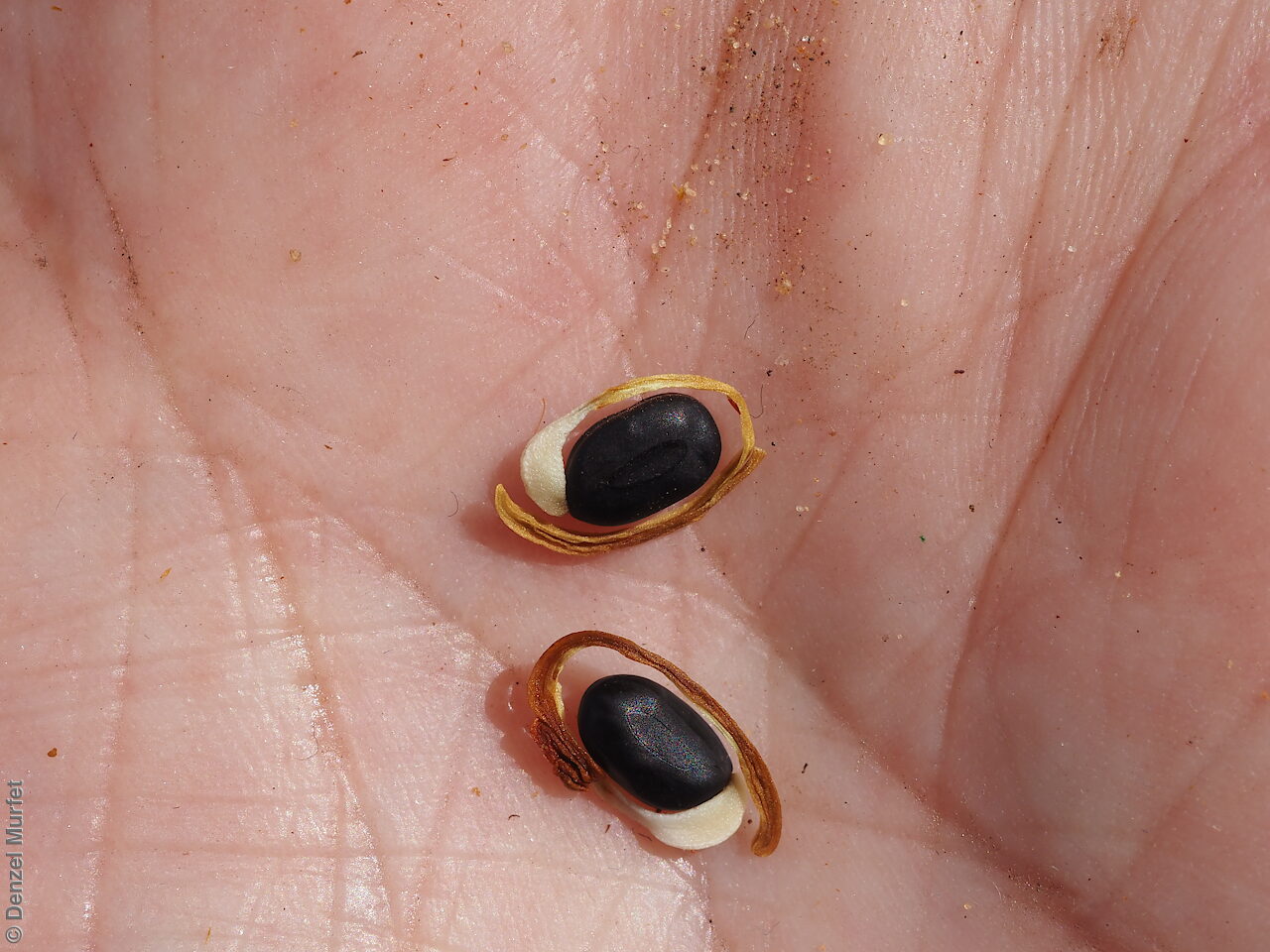
























Botanical art
Prior names
Acacia aff. steedmannii Maiden & Blakely
Common names
Spindly Wattle
Chalky Wattle
Etymology
Acacia from the Greek 'akakia' and derived from 'ake' or 'akis 'meaning a sharp point or thorn and 'akazo' meaning to sharpen. Dioscorides, the Greek physician and botanist used the word in the 1st century AD for the Egyptian thorn tree, Acacia arabica. Cretacea from the Latin 'cretaceus' meaning chalk-white, referring to the conspicuously chalky branchlets, inflorescences and legumes.
Distribution and status
Endemic to South Australia and found in low shrubland and mallee scrub, on deep red sand in a small restricted area on Eyre Peninsula, north of Cowell. Native. Very rare in South Australia.
Herbarium region: Eyre Peninsula
NRM region: Eyre Peninsula
AVH map: SA distribution map (external link)
Plant description
Spindly, often single stemmed shrub or small tree to 4 m tall, crown open, straggly; rarely bushy. Bark smooth grey or red-brown on lower trunks. Leaves narrowly elliptic to narrowly oblanceolate to 10 cm long and 18 mm wide, greyish medium green. Inflorescences racemose or with a few simple peduncles, with 5-14 globular, lemon or golden-yellow flower-heads. Flowering between July and January. Fruits are long, straight or slightly curved, pale brown pod to 9 cm long and 6 mm wide. Seeds are hard, black, oblong to ovoid seed to 7 mm long and 4 mm wide. Seed embryo type is investing.
Seed collection and propagation
Collect seeds between August and December. Collect mature pods that are turning brow, with hard, dark seeds inside. Place the pods in a tray and leave to dry for 1-2 weeks or until the pods begin to split. Then rub the dried pods to dislodge the seeds. Use a sieve to separate any unwanted material. Store the seeds with a desiccant such as dried silica beads or dry rice, in an air tight container in a cool and dry place. From one collection, the seed viability was high, at 100%. This species has physical dormancy that needs to be overcome for the seed to germinate (e.g. nicking or softening the seed coat).
| Location | No. of seeds (weight grams) | Number of plants | Date collected | Collection number Collection location | Date stored | % Viability | Storage temperature |
|---|---|---|---|---|---|---|---|
| BGA MSB | 2,100 (71.75 g) 2,100 (71.75 g) | 23 | 6-Dec-2005 | PJA109 Eyre Peninsula | 24-Jun-2020 | 100% | -18°C |
| BGA | 4,500 (145.33 g) | W930838BH Eyre Peninsula | 7-Jul-2022 | 100% | -18°C | ||
| BGA | 9,670 (297.390 g) | 25+ | 13-Dec-2022 | DJD4158 Eyre Peninsula | 20-Jun-2023 | 100% | -18°C, -80°C |
| BGA | 1,700 (53.985 g) | 6 | 17-Nov-2021 | JRG843 Eyre Peninsula | 20-Jun-2023 | 94% | -18°C |
Number of plants: This is the number of plants from which the seeds were collected.
Collection location: The Herbarium of South Australia's region name.
% Viability: Percentage of filled healthy seeds determined by a cut test or x-ray.